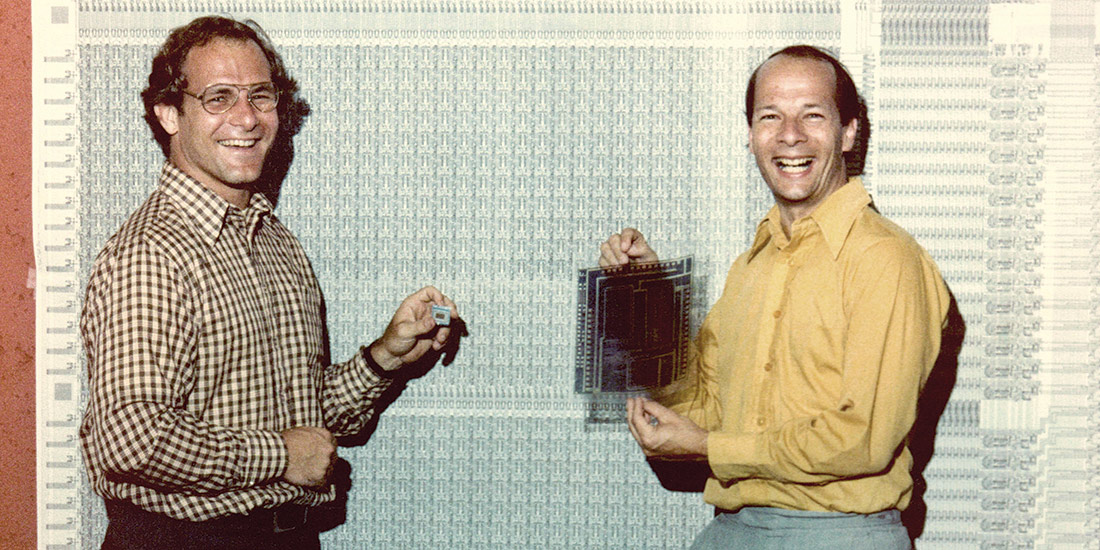 STILL IN FASHION: EECS professors David Patterson and Carlo Séquin, pictured in 1981, were recently honored, along with other Berkeley computer scientists, for their role in developing the Reduced Instruction Set Computer (RISC) — technology that revolutionized the way microprocessors function. (Photo by Manny Fernandez)
STILL IN FASHION: EECS professors David Patterson and Carlo Séquin, pictured in 1981, were recently honored, along with other Berkeley computer scientists, for their role in developing the Reduced Instruction Set Computer (RISC) — technology that revolutionized the way microprocessors function. (Photo by Manny Fernandez)
Simplify: The RISC story
It was a time when Blondie, Pink Floyd and Olivia Newton-John topped the Billboard music chart. “Let’s go back to 1980,” said David Patterson recently, addressing a group gathered to mark the unveiling of a milestone award. “It’s a year before the IBM PC. Four years before Macintosh.” Computing, as we know it now, was still over the horizon.
The crowd, consisting of circa-1980 alumni, faculty members and industry representatives, joined Patterson in remembering how a group of Berkeley computer scientists first started working on a better way of designing microprocessors, a change that would eventually enable personal workstations and then mobile computing.
The Berkeley project became known as the Reduced Instruction Set Computer (RISC), and the result was the development of single-chip microprocessors. The technology — novel, even counter-intuitive at the time — was led by Patterson and fellow computer science professor Carlo Séquin.
“Throughout the 1970s, the prevailing wisdom was that the best way to exploit the increasing capabilities of semiconductor technology was to similarly increase the complexity of computer architecture,” said Howard Michel, president of the Institute of Electrical and Electronics Engineers (IEEE), during his remarks at the celebration.
The RISC team took the opposite approach and stripped down semiconductor technology to its bare bones, realizing that unnecessary complexity came at the cost of overall computing power. Processing and memory were put on the same chip, performance increased, and soon RISC chips were outperforming other systems. The RISC research was made open-source, spun off into a variety of related projects and later widely commercialized.
Today, RISC roots are used in ARM-based microprocessors, which are the foundation of most smartphones. “The ‘R’ in ARM stands for RISC,” said Patterson. “They shipped 10 billion ARM processors last year, more than one for every person on the planet.”
In February, Patterson, Séquin and other members of the original RISC team were awarded an IEEE technology milestone for their landmark efforts. A plaque honoring the achievement hangs in the plaza entryway of Soda Hall.
“It was a remarkable moment in time when a dozen Berkeley graduate students could build a better microprocessor than Intel could build,” said Patterson.
